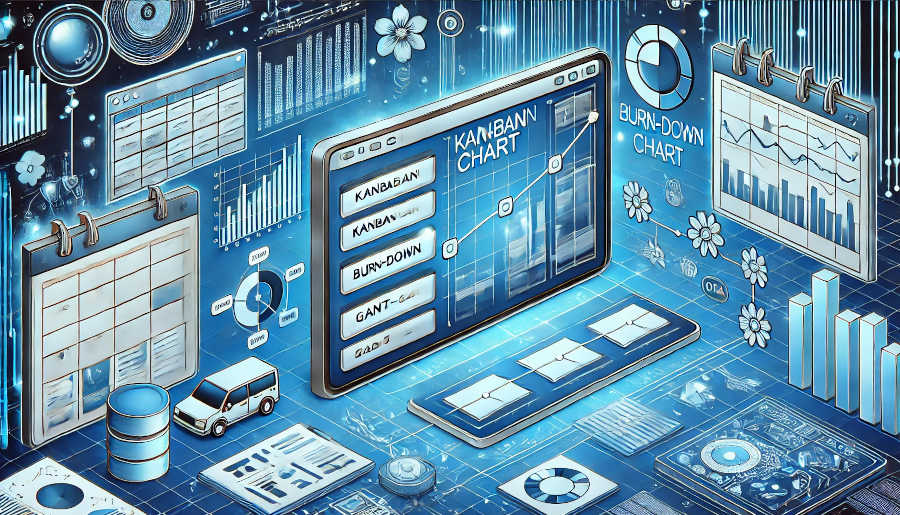Establishing a Quality Mindset
A quality mindset is the foundation of effective QA in agile iterative development. It starts with the understanding that quality is everyone's responsibility, not just the QA team's. Developers, product owners, and even stakeholders need to be committed to delivering a high-quality product. This means that from the very beginning of the project, quality should be a top priority.
When everyone on the team is focused on quality, it becomes easier to catch issues early. For example, developers can write unit tests as they code, ensuring that each small piece of functionality works as expected. Product owners can provide clear and detailed requirements, reducing the chances of misunderstandings that could lead to quality problems. Stakeholders can also play a role by providing timely feedback on prototypes and early versions of the product.
Moreover, a quality mindset encourages continuous learning and improvement. Teams should be open to new technologies and methodologies that can enhance quality. They should also analyze past projects to identify areas for improvement and implement changes in future iterations. This proactive approach to quality can prevent many issues from occurring in the first place.
Continuous Testing
Continuous testing is a cornerstone of QA in agile iterative development. In an agile environment, code is constantly changing, and new features are being added regularly. Continuous testing ensures that any changes made to the codebase do not introduce new bugs or regressions. It involves running a suite of tests automatically whenever there is a code change.
There are different types of tests that can be included in continuous testing. Unit tests, as mentioned earlier, are written by developers to test individual components of the code. Integration tests are then used to verify how different components work together. System tests simulate real-world scenarios and test the entire system as a whole. By running these tests continuously, teams can quickly identify any issues and address them immediately.
Continuous testing also helps in reducing the overall time and effort required for testing. Instead of waiting until the end of the development cycle to start testing, bugs are caught early, when they are easier and cheaper to fix. This not only improves the quality of the product but also speeds up the development process, allowing teams to deliver value to customers more quickly.
Test-Driven Development (TDD)
Test-driven development is a powerful practice that flips the traditional development process on its head. In TDD, tests are written before the code. Developers start by defining the requirements in the form of tests. These tests describe how the code should behave. Only then do they write the code to make the tests pass.
The advantage of TDD is that it forces developers to think about the requirements and the expected behavior of the code before they start coding. This helps in writing more modular, maintainable, and testable code. For example, if a developer is writing a function to calculate the sum of two numbers, they would first write a test that checks if the function returns the correct sum for different input values. Then, they would write the code for the function.
TDD also makes it easier to refactor the code. Since the tests are already in place, developers can make changes to the code with confidence, knowing that they can run the tests to ensure that the functionality has not been broken. This iterative process of writing tests, writing code, and refactoring helps in building high-quality software.
Pair Programming
Pair programming is a collaborative practice where two developers work together at the same workstation, sharing the same keyboard and monitor. One developer, the driver, writes the code, while the other, the navigator, reviews the code as it is being written, provides suggestions, and helps catch any potential issues.

This practice has several benefits for quality assurance. First, it provides immediate feedback. The navigator can point out any coding mistakes, such as syntax errors or logical flaws, as soon as they occur. This helps in preventing bugs from being introduced into the codebase. Second, pair programming promotes knowledge sharing. Developers with different skills and experiences can learn from each other, which can lead to better code quality.
Moreover, pair programming can improve the overall understanding of the codebase. Since two developers are working on the same piece of code, there are two sets of eyes and minds understanding the requirements and the implementation. This can be especially useful when it comes to maintaining and enhancing the code in the future.
Continuous Integration
Continuous integration is the practice of integrating code changes from multiple developers into a shared repository frequently. Whenever a developer makes a change to the code, it is merged into the main codebase, and a set of automated tests are run. If the tests pass, the integration is successful; if not, the developers are notified to fix the issues.
Continuous integration helps in detecting integration issues early. In a large project with multiple developers working on different parts of the code, there is a high chance of conflicts and compatibility issues when the code is integrated. By integrating code changes frequently and running tests, these issues can be identified and resolved quickly.
It also promotes a culture of collaboration and shared responsibility. Since everyone's code is being integrated regularly, developers are more motivated to ensure that their code is of high quality and does not break the build. This leads to a more stable and reliable codebase over time.
User Story Mapping
User story mapping is a technique used to visualize and organize user stories. User stories are short, simple descriptions of a feature from the user's perspective. By mapping out user stories, teams can gain a better understanding of the product's functionality and how different features are related.
This practice is beneficial for quality assurance as it helps in ensuring that all requirements are covered. When user stories are mapped out, it becomes easier to identify any gaps in the requirements. Teams can then work on filling these gaps before starting the development. User story mapping also helps in prioritizing user stories, ensuring that the most important features are developed first.
Moreover, user story mapping provides a common understanding among all stakeholders. Developers, product owners, and testers can all refer to the user story map to understand the overall scope of the project and how their work fits into it. This reduces the chances of misunderstandings and miscommunications, which can lead to quality issues.
Feedback Loops
Feedback loops are essential in agile iterative development for maintaining quality. A feedback loop is a process where information about the product's quality is collected, analyzed, and used to make improvements. This can involve feedback from users, testers, developers, and other stakeholders.
User feedback is particularly valuable as it provides insights into how the product is actually being used in the real world. Testers can provide feedback on the presence of bugs, usability issues, and performance problems. Developers can share their experiences during the development process, such as difficulties in implementing certain features or areas where the code could be improved.
By acting on this feedback, teams can make iterative improvements to the product. For example, if users complain about a particular feature being difficult to use, the team can make changes to improve its usability in the next iteration. Feedback loops ensure that the product evolves over time to meet the changing needs and expectations of the users, thereby maintaining high-quality standards.
In conclusion, ensuring quality in agile iterative development requires a combination of these best practices. Establishing a quality mindset sets the tone for the entire project, making quality a shared responsibility. Continuous testing, test-driven development, and pair programming help in catching and preventing bugs at different stages of the development process. Continuous integration ensures that the codebase remains stable and reliable. User story mapping helps in organizing requirements and ensuring that all aspects of the product are considered. Finally, feedback loops enable teams to make iterative improvements based on real-world insights. By implementing these practices, teams can deliver high-quality products in an agile iterative development environment, meeting the needs of their customers and staying competitive in the market. These practices not only improve the quality of the end product but also enhance the efficiency and effectiveness of the development process, leading to better overall project outcomes.
ARTICLE TITLE :Quality assurance in agile iterative development: 7 best practices ,AUTHOR :ITpmlib

















